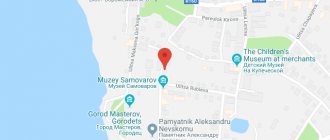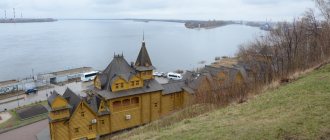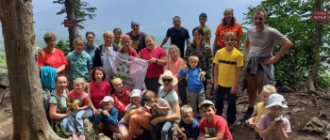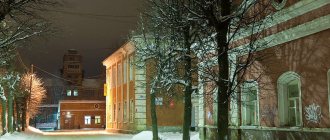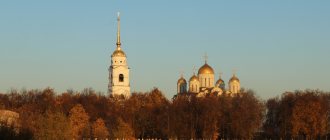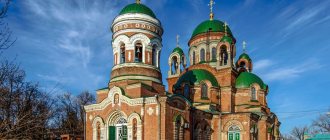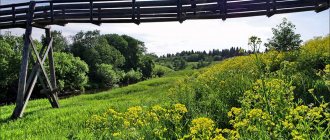History of Vasilyevsky Island
Vasilyevsky Island was mentioned in the “census book” in 1500. According to one legend, this name arose from the name of Vasily Selezny, its owner, mayor from Novgorod. The island began to be developed simultaneously with the founding of the Northern capital at the beginning of the 18th century.
Architect J.-B. Leblon developed a project approved by Peter the Great. According to his idea, it was assumed that this territory would become the center of the city. Many famous architects and sculptors worked to create this area. The building of the Twelve Colleges is located here (design by D. Trezzini). At the beginning of the 18th century, it housed 12 colleges, the Senate and the Synod, and currently it houses the St. Petersburg State University.
The Menshikov Palace is being built nearby (today it is formally one of the branches of the Hermitage). The Academy of Sciences was built according to Quarenghi's design.
Prince A.D. Menshikov ordered to cut a clearing from his Palace to the west, to the Baltic Sea. This clearing was called the Bolshoi Perspektiva, and later - the Bolshoi Prospekt. The basis of this area is made up of Bolshoy, Maly and Sredny avenues, which intersect with street lines with numbers as their names. Until the 70s of the 18th century, there were canals along a number of lines. And when they became shallow, they were buried. The word "line" does not mean the street, but the side of the canal.
The first residential buildings and churches appeared next to Bolshoy Prospekt. Most of them have survived to this day, only slightly changed. Here are located such architectural monuments as the building of the Academy of Arts, the building of the Mining Institute, the House of Academicians, in which 26 great Russian scientists lived at different times, the building of the Gostiny Dvor and many others.
Not far from the building of the Twelve Colleges there is a monument to M.V. Lomonosov, in front of the building of the Naval Cadet Corps - a monument to I.F. Krusenstern.
Near the building of the Academy of Arts there are two stone sphinxes looking at each other. (The Sphinx is a mythical creature with the head of a man and the body of a lion).
The Lutheran Church of St. Catherine is of great historical and cultural value. St. Catherine's Church is an active German parish of the Evangelical Lutheran Church. The temple with 1100 seats was founded in June 1768.
Sculptures older than the city
If you drive along Vasilyevsky along the Bolshaya Neva, you can see the oldest sculptures in St. Petersburg. They are about three and a half thousand years old. Yes, yes, the city is only a little over three hundred, and they are 10 times older. And they come from Egypt. The sculptures were found in 1820 in the city of Thebes. From there they were transported to Alexandria for sale. Where the traveler Andrei Muravyov saw them. I wanted to buy it, but I was too late - it had already been sold to the French. However, the Russian poet and playwright was lucky - there was a revolution in France, there was somehow no time for sphinxes, and then Muravyov, with the permission of the emperor, of course, quickly bought up the stone sculptures.
The Sphinxes clearly did not want to leave the warm coast of the Nile and move to the northern cold Neva. When the sculptures were lifted on board, they fell into the water, but they were still “seated” and sent on their way. They say that all the way from the Mediterranean Sea to the Baltic Sea, the ship carrying the sculptures was pursued by terrible storms. They were first placed in the garden of the Academy of Sciences, and then, in 1834, they were moved to the embankment. Later, they were accompanied by other mythological creatures - griffins. Together they make their dream come true. To do this, you need to grab the griffin’s tooth with one hand, stroke the head with the other and whisper a wish in your ear, looking into the eyes of the sphinx, and then it will definitely come true.
PHOTO by the author
By the way, archaeologists suggest that the faces of the sphinxes completely coincide with the image of Pharaoh Amenhotep III. How did you understand? We read the inscription carved on the base - this is his name. Man with a mirror, owl, sunrise, bull and falcon….
Pedestrian streets on Vasilievsky Island (lines 6 and 7)
It is generally accepted that there are 10 pedestrian streets in St. Petersburg. One of the most beautiful is the 6th and 7th lines of Vasilyevsky Island. The most beautiful part of the street is located between Bolshoy and Sredny Avenues of Vasilievsky Island. This part of the street is also called Andreevsky Boulevard. You can get here by metro - when leaving the Vasileostrovskaya station, turn right and you will find yourself in the pedestrian zone.
Here you will see a blue horse-drawn carriage (late 19th - early 20th century).
In the middle part of the street there is a boulevard with growing larches and two fountains. Lots of shops, cafes, bars and restaurants. In the middle of the street there is a monument to Vasily.
Businesses and work in the area
Despite its small territory, Vasilievsky Island accommodates about 30 large industrial enterprises, 80% of which work for the defense industry, as well as about 6 thousand small commercial establishments of various specializations. It so happened historically, since the time of Peter I, that the Vasileostrovsky district is a special territory that gives its residents the opportunity to both live and work. However, in reality everything turned out completely differently.
Large enterprises here are represented by the ancient Becker piano factory, the Baltic Shipbuilding and Steel Rolling Plant, Elektroapparat, Northern Textiles, the Tannery named after. Radishchev, there is an Automobile Repair Plant, a plant named after. Kalinina, the famous Rot-Front factory throughout Russia and others.
Baltic plant. Photo by udva (https://fotki.yandex.ru/users/udva)
Gavan is also of great economic importance for the region and the city as a whole - recently the first stage of the “Marine Façade” project was implemented: the sea passenger port of St. Petersburg, intended for cruise ships, was put into operation. Thus, the port located on Vasilievsky Island acquired not only commercial, but also tourist significance.
In general, the “Marine Facade” project means a lot for the development of the area, significant investments have been attracted, and, despite all the warnings from ecologists about the inexpediency of creating such a number of alluvial areas, the project is gaining momentum.
In the area there are several shopping malls selling clothing and footwear from leading European casual brands; hypermarket "Lenta" and St. Andrew's market.
Monument to Vasily Korchmin
On May 24, 2003, a monument to Vasily was unveiled, designed by a sixth-year student at the Academy of Arts, Grigory Lukyanov. His colleague Sergei Sergeev joined the work on the monument.
According to legend, during the construction of the Peter and Paul Fortress, on the contrary, at the tip of the island - Strelka, an artillery battery was built to protect the entrance to the Neva from the Swedes, commanded by bombardier lieutenant Vasily Dmitrievich Korchmin. Peter I sent him orders and instructions with a laconic inscription: “To Vasily on the island.” And after his death, the island was named in memory of Vasily Korchmin. Vasily, created by him, is made in the image of a bombardier lieutenant of Peter the Great's time. At the end of the street you can see 2 temples.
Walking routes: best routes
The island is about 3.5 km long and is an excellent place for walking excursions. Most often, excursions begin opposite the entrance to the Vasileostrovskaya metro station. From there you can walk to the ancient pharmacy of Doctor Pel and his sons. This is a unique place of power. Everyone who crosses the threshold of a pharmacy gets a chance to change their life. According to legend, in the basement of a pharmacy, the Doctor deduced the formula for the philosopher's stone, which helps him travel in parallel worlds.
In the backyard is the Griffin Tower. They say that there the doctor brought out these mystical creatures. Rumors about this are fueled by mysterious numbers on the tower. Who exactly left them, what they mean is still not known for certain. Maybe there’s a code for immortality hidden there, or maybe it’s just someone’s joke.
Afterwards the group goes to the building of the Faculty of Philology. This place is also shrouded in mystery. On a full moon, you can see the ghost of a student who was tortured to death by strict examiners. The ghost is harmless, it only sighs bitterly, but does not harm anyone.
There is another interesting object that few people know about. This is the building of the Optical Institute with a magnificent observation deck from where you can see the Neva embankment. Another popular tourist route is a walk through the scientific sites of Strelka. Surprisingly, the most famous scientific institutions in Russia are located on the island. Amazingly, the small island was considered a center of science and education.
Church of the Three Saints
The Church of the Three Saints, named after Saints Basil the Great, Gregory the Theologian and John Chrysostom, was assigned to St. Andrew's Cathedral, at which it was founded as a warm building in 1740 according to the design of Carlo Giuseppe Trezzini. This is one of the oldest stone churches in the city. During Soviet times, this church housed a knitting factory. On July 15, 1991, the church was transferred to St. Andrew's Cathedral, which uses it after restoration for early liturgies.
On February 12, 2001, the church was consecrated by Metropolitan of St. Petersburg and Ladoga Vladimir.
St. Andrew's Cathedral
At the intersection of the 6th line with Bolshoy Prospekt there is the Orthodox Church of St. Apostle Andrew the First-Called, one of the oldest in the city - St. Andrew's Cathedral. The Order of St. Apostle Andrew the First-Called is the first Russian order, established by Peter I in 1698. The sign of the order is located above the entrance to the cathedral. On the alley there is an 8-meter obelisk made of granite, built to mark the three hundredth anniversary of the establishment of this award (architects A.A. Kazankov and Yu.V. Sitnikov)
Crime situation in the area
The criminal situation in the Vasileostrovsky district is relatively calm compared to some other regions of St. Petersburg. Of course, in the 90s, the proximity of the Harbor and the presence of expensive restaurants on the island’s embankment made the area to some extent attractive to bandits - they shot here quite often. Plus, the “old” new buildings in the Primorskaya area were places where drugs were sold and bought, but today the situation is much better.
House-ships near Primorskaya
A lot of crime in the area is associated with car and apartment thefts, as well as road accidents, especially at night. Not always sober reckless drivers, confident in their impunity, like to drive along empty embankments and avenues, and sometimes this ends tragically.
Exchange on Vasilyevsky Island
The central building of the architectural ensemble of the Spit of Vasilievsky Island is the Exchange building, built according to the design of the French architect J.F. Thomas de Thomon in the style of classicism.
The facades of the Exchange are decorated with sculptural groups symbolizing the ocean, rivers and navigation (authors I.P. Prokofiev and F.F. Shchedrin). In front of the Exchange we see the famous rostral columns (sculptors I. Camberlain and J. Thibault).
The Northern and Southern warehouse buildings were built on both sides of the Exchange (designed by I.F. Lukini).
On February 11, 2010, a new exchange building was opened. In addition to the stock exchange, the building housed a business center and a bank. Due to the excess of the height regulations, after the intervention of the city authorities, the upper floors of the building were dismantled.
Petersburg Metro Museum
The Metro Museum in St. Petersburg is a quiet place, mainly because few people know about it. If you take the metro, you can get here by reaching the Primorskaya station, on the same Vasilyevsky Island.
The entrance to the building itself is next to the metro station, look carefully so as not to miss it. Visiting the museum is free if you view the exhibits yourself.
To do this, you need to call, make an appointment, and present documents at the entrance. For those who want to listen to the history of the metro and the appearance of exhibits, paid guided tours are created.
The cost of the excursion must be confirmed with the museum administration. The official website of the establishment is here
https://dosug.metro.spb.ru/metro-museum/
It’s quite nice to take a walk on your own. It’s interesting to look at the driver’s cabin, what the subway cars were like, and the surroundings.
On the way from the museum you can buy souvenirs and sweets with a subway theme. You won’t see anything unusual here, if the metro is not that interesting and you don’t have much time in St. Petersburg, feel free to choose another leisure option.
The museum is located at Odoevskaya street, No. 29.
Museum on the map:
Bridges of Vasilyevsky Island
The Blagoveshchensky and Palace bridges connect the island with the city center, the Betancourt, Tuchkov and Birzhevoy bridges connect the island to the Petrogradskaya side.
The narrowest street in St. Petersburg
On Vasilyevsky Island there is the narrowest street in the city - Repina Street (formerly Peschany, Solovyovsky Lane). Its width is 5.6 m. It runs between the 1st and 2nd lines, from Rumyantsevsky Garden to Sredny Prospekt, crossing Bolshoy Prospekt.
The main advantage of Vasilyevsky Island in St. Petersburg is its proximity to the city center. Therefore, it is especially convenient to stay here for guests who come to get to know the city, and for those who arrive on a business trip and plan to visit the Lenexpo Exhibition Complex. But we must keep in mind that at night in the summer the island becomes practically cut off from the rest of the city due to the opening of bridges. In recent years, this problem has been partially solved - you can get to the Petrogradskaya Strona through the Betancourt drawbridge, to the airport and other areas of the city - via the toll Western High-Speed Diameter, in addition, on weekends there is a metro shuttle train between the Admiralteyskaya stations (in .
Municipal division of the area and property prices
The district is divided into 5 municipal districts: districts No. 7, 8, 9 (Gavan), 11 and the Marine Municipal District.
Map of Vasileostrovsky district
The boundaries of the 7th municipal district of the Vasileostrovsky district run along the Makarov embankment, Sredny Prospekt, along the 24-25th line to Bolshoy Prospekt and Detskaya Street, along the Kosaya Line, Neva Bay, the Bolshaya and Malaya Neva embankments. This is one of the large municipal districts, mainly consisting of residential “old” stock and industrial zones. There are many unoccupied and, from the point of view of realtors, practically hopeless communal apartments in the area. Green spaces are represented by courtyard public gardens. You need to get to any of the two metro stations by additional ground transport. Only some residential areas located in the center of the island allow you to quickly, and sometimes simply on foot, get to the Vasileostrovskaya metro station.
The cost of a square meter of housing in the district ranges from 90 to 110 thousand rubles per square meter, however, apartments are bought here reluctantly - there are almost no “one-room offers”, and multi-room housing often needs very serious repairs and necessarily replacement of outdated communications. The resettlement of communal apartments has also stopped due to the crisis; it is becoming increasingly difficult for realtors to find people willing to live in the old stock, because many proposals for new luxury housing have appeared on the real estate market.
The 8th municipal district is mainly a Stalinist development of Bering Street, the western part of Maly and Sredny Avenues, Nalichnaya Street and the embankment of the Smolenka River. Here, real estate is more expensive, the air is cleaner, there is better transport and greenery - nearby is the Smolensk Memorial Cemetery, where it is quite pleasant to walk in the summer. The disadvantages of living here are also some distance from metro stations and inevitable traffic jams when trying to get to the mainland during the day.
Among the residential buildings here, Stalinist buildings and brick houses predominate. This is spacious, comfortable housing, with a convenient layout, quite promising for implementation. The cost per square meter on the secondary market reaches 120 thousand rubles per square meter. New housing of the “economy” and “comfort” classes is also being built in the same district. The offers are very diverse, from small studio apartments, which are very popular among out-of-town students who are happy to settle close to their university, to 4-room apartments designed for large families. Since the real estate market is currently experiencing some difficulties, among primary housing in this district you can find offers starting from 90 thousand rubles per square meter.
Harbor or the 9th municipal district is the territory bounded by Bering, Nakhimov and Korablestroiteley streets, as well as Morskaya Embankment, Nevskaya Guba, Europe Square and the western sections of Kosaya Liniya, Detskaya Street and Bolshoy Prospekt. This is the area of Gavan and Lenexpo in the Gulf of Finland, wedge-shaped deepening into the center of the island. The main industrial enterprises are located here, and residential development is represented by almost all types of houses - from the Peter the Great's foundation to modern new buildings.
The district is distinguished by its convenient location relative to all public transport routes; individual blocks are within walking distance from the Primorskaya metro station. However, constant humid and cold winds from the bay, from which even the highest quality thermal insulation of residential premises cannot protect, can make living here somewhat uncomfortable. The price per square meter here depends on the type of residential development and the “status” of the house. On the real estate market there are offers for 80 thousand rubles per square meter, and for 150 thousand rubles and above.
Municipal district No. 11 includes Sulfur Island, western territories along the Smolenka River and Malaya Neva. This is the Primorskaya metro area with all its new buildings - “old” and new. It is the windiest, coldest and most expensive here. This is a modern development with developed infrastructure, mostly good transport links and no traffic jams. To the east there are industrial zones and areas occupied by various commercial premises, but pollution is not felt here. The average cost per square meter here is 110-115 thousand rubles, but in “old” new buildings - series 137 - you can find it much cheaper, about 80 thousand rubles per sq.m.
This is a modern development with developed infrastructure, mostly good transport links and no traffic jams. To the east there are industrial zones and areas occupied by various commercial premises, but pollution is not felt here.
And the last district of the Vasileostrovsky district - the Morskoy District - is located from Nalichnaya Street along Bering to Nakhimov, and further along Korablestroiteley to the Pribaltiyskaya Hotel, along the Neva Bay to the Smolenka River and closes along Smolenka to Nalichnaya and Bering. This is also a relatively clean area, which is currently affected by the large-scale construction of the “Sea Facade”. Today this is the most elite and promising residential sector on Vasilyevsky Island. The “Marine Facade” complex involves the construction of hundreds of thousands of square meters of “business class” and “comfort” class housing. According to realtors, the cost of housing here will reach 150-160 thousand rubles per square meter, and this is not the limit. However, there are also more economical offers. Living here is pleasant and convenient, the district is safe, with developed infrastructure. If again, it weren’t for traffic jams and wind, but this is a problem for the entire Vasileostrovsky district as a whole.

